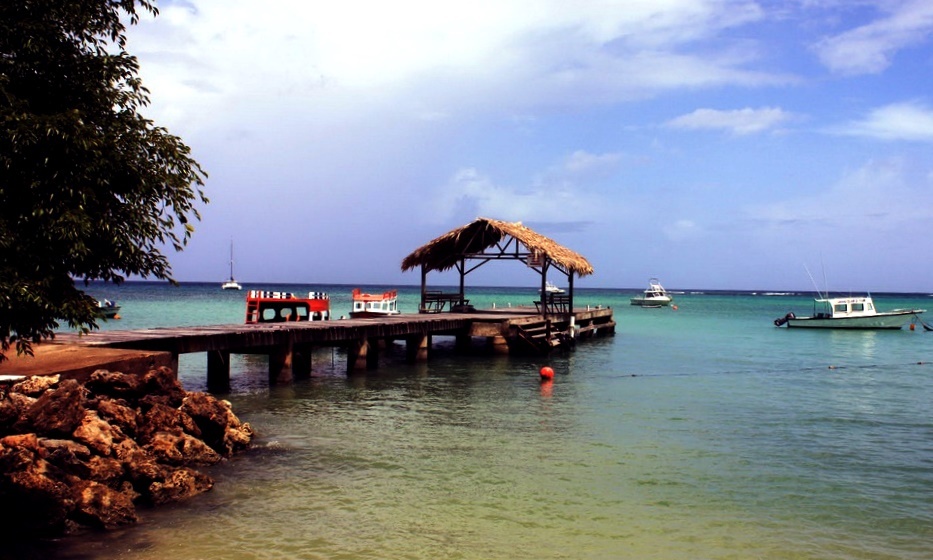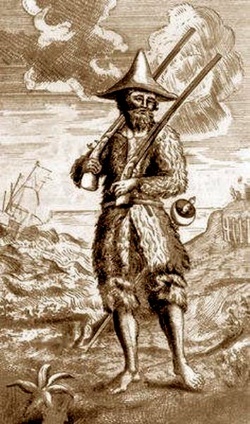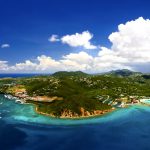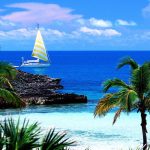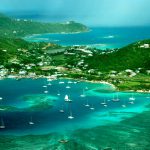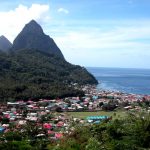When creating Robinson Crusoe, Defoe used various sources - notes from travelers, stories of sailors, memories of military men and merchants who visited the ocean. Defoe himself did not travel, so many mistakes were made in describing the nature of the island.
Daniel Defoe settled his hero far from civilization and people, where he had to start life all over again - by building a home and making the simplest things, taking care of food and his own life and health. But Robinson was lucky: the corner of the planet where fate had thrown him could truly be called “paradise.” This island is probably Tobago, one of the southernmost of the Lesser Caribbean group of islands in the Caribbean Sea, and the shore he first saw on the horizon is not the mainland, but the neighboring island of Trinidad.
Daniel Defoe brought many plants to the island, such as papaya, acaju, avocado, agave, anonymous.
Papaya is a plant that can be found everywhere throughout Central America, and Robinson could have found it on his Caribbean island. Avocado fruits look like dark green pears, weighing up to 600 grams.
Akazhu fruits are extremely rich in vitamins. Since ancient times, they have served the Indians as a healing agent. Unfortunately, Robinson did not know about the healing properties of this plant growing on the islands of the Caribbean. Anona fruits are similar to pineapple, but with snow-white flesh. Crusoe could have used it as a table decoration. It is unknown what Defoe meant when he spoke of the Robinson Island melon. We can only say that the homeland of melon is Asia. Perhaps Dafoe meant papaya when he spoke of the island melon.
There are no predators on Robinson Island. This point is true, because there are no predators at all on small oceanic islands. The crab is a ghost. Perhaps it was this creature that was first seen by Robinson, washed ashore by storm waves. This crab, although it spends most of its time on the shore, cannot do without water. When getting food, the ghost crab moves in such a way that it manages to catch flying insects, even small birds. Green turtle. Robinson could have found these turtles on his island. The green turtle is often called the “soup turtle” for its tasty meat. The length of its yellowish-green shell is about a meter, and its weight reaches three hundred kilograms. In the 17th century, flocks of these turtles were so numerous that they could block the path of a ship. However, it is very difficult to catch such a turtle in the water, so they were hunted, as a rule, on land, during egg laying, when the animal becomes completely helpless.
 |
 |
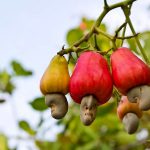 |
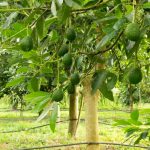 |
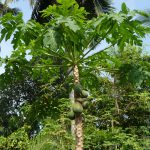 |
Europeans appeared on the Caribbean islands at the end of the 16th century and not at all to extend a hand of friendship. They were driven by the thirst for profit and the desire to capture more and more lands. The naive and gullible Indians first met the bearded, light-skinned aliens as messengers of the gods, but were soon disappointed. Attempts at mass conversion to Christianity and heavy forced labor caused fierce resistance from local residents. The fate of the indigenous population of the Greater and Lesser Caribbean Islands was tragic. By the time the islands were captured by the Spaniards, about three million Indians lived there. Convinced that they would never be able to turn the natives into obedient slaves, the Spaniards began to mercilessly exterminate them. “Savages” were not considered people, so no one was responsible for the death of an Indian at the hands of a white man. During the three decades of Spanish rule on the islands, the Arawakan tribes were practically exterminated and the number of Caribs decreased a hundred times.
For the first time in many years of loneliness, Robinson came face to face with other people. These were the indigenous inhabitants of the Caribbean islands - representatives of various Caribbean tribes. “Caribou, caribou!” - Friday answers when Robinson asks him what the islanders call themselves. The Arawaks were peaceful and lived in fear of their warlike neighbors. What tribe did Friday belong to? Based on the fact that he was captured by enemies and almost eaten, he can be attributed to one of the Arawaks tribes.
Based on this, and despite the fact that quite a few mistakes were made when creating the description of Robinson’s island by the author, we can say with confidence that this island was copied from a real Caribbean one, it is possible that it could be the island of Tobago.
